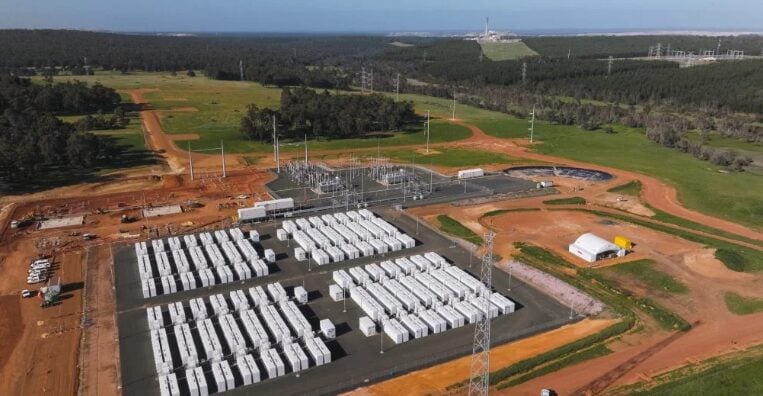
“Battery energy storage system (BESS) project financing is rapidly evolving,” says Niall Brady, head of solar and battery storage at the Clean Energy Finance Corporation (CEFC).
“The banks have quickly come to the table, and they’re trying to find their feet; we’re seeing new structures, a lot of people trying to figure things out,” Brady adds.
Enjoy 12 months of exclusive analysis
- Regular insight and analysis of the industry’s biggest developments
- In-depth interviews with the industry’s leading figures
- Annual digital subscription to the PV Tech Power journal
- Discounts on Solar Media’s portfolio of events, in-person and virtual
Or continue reading this article for free
Batteries can often be capital-intensive for developers to build; thus, financing and new financial structures will likely become a growing area of interest within the market. But if project financing is done correctly, the rewards can be fruitful, the CEFC executive says.
For instance, UK-headquartered energy industry data platform Modo Energy recently said that BESS in Australia’s National Electricity Market (NEM) earned an average of AU$148,000/MW (US$92,810/MW) in 2024, a 45% increase year-on-year. Thimo Mueller, general manager of commercial at AEMO Services, also told ESN Premium last week that we could potentially see flexible energy storage assets earn higher than investors originally forecasted.
Brady notes that virtual battery offtake agreements are an example of new, innovative financing options. These types of agreements have been deployed at projects such as the 450MWh Victorian Big Battery, the 540MWh Western Downs Battery, and the 200MWh Capital Battery project.
Despite this, there is still an “elephant in the room” regarding BESS financing in Australia.
The ‘elephant in the room’ for Australia’s energy storage market
“The elephant in the room is the Capacity Investment Scheme (CIS) and Long-Terms Energy Services Agreements (LTESAs), which haven’t been banked yet. They will be major industry drivers over the next few years,” CEFC solar and storage head Brady says.
Regarding the LTESAs, AEMO Services has awarded over 18GWh of support to long-duration energy storage projects. AEMO Services’ Mueller explained that the most recent tender was the organisation’s “largest to date and the largest of its kind in Australia” and saw almost 14GWh of LTESAs awarded.
Mueller explained that these tenders have become increasingly competitive in recent months. This is backed up by Eku Energy’s chief technology officer, Elias Saba, who told ESN Premium last month that the tender’s competitive nature meant the company had to be sharp on its technical solution and price.
On the other hand, the CIS initiative has been integral to BESS financing and ensuring investor confidence in Australia’s BESS market. The CIS targets 32GW of renewable energy generation and energy storage by 2032.
Via the scheme, the government effectively underwrites revenues for successful projects against agreed revenue ‘floor’ and ‘ceiling’ prices through 10–15-year Capacity Investment Scheme Agreements (CISAs). ESN Premium spoke with one of the initiative’s designers, Salim Mazouz, head of the policy and design branch office for the CIS at the government Department of Climate, Energy, the Environment and Water (DCEEW), about the scheme last year.
Alongside the CIS scheme, Brady notes that the Future Made in Australia, an AU$22.7 billion (US$14.3 billion) programme to invest in reindustrialising Australia with a focus on clean energy tech, including batteries, solar PV, electric vehicles (EVs), and hydrogen, could also help support the energy transition.
“The Future Made in Australia will likely be a longer-term driver of the energy transition. It will be more on the innovation side. I think BESS will be institutional investors and larger assets,” Brady notes.
Despite this, the National Battery Strategy is a key pillar of Future Made in Australia and aims to stimulate investment in the battery market.
AU$523.2 million was earmarked for the Battery Breakthrough Initiative, which provides targeted incentives to develop battery manufacturing capabilities. The initiative will be shared among companies that have identified high-value opportunities.
The Energy Storage Summit Australia 2025 takes place today and tomorrow (18-19 March) at the Sofitel Wentworth Sydney, hosted by our publisher Solar Media.

